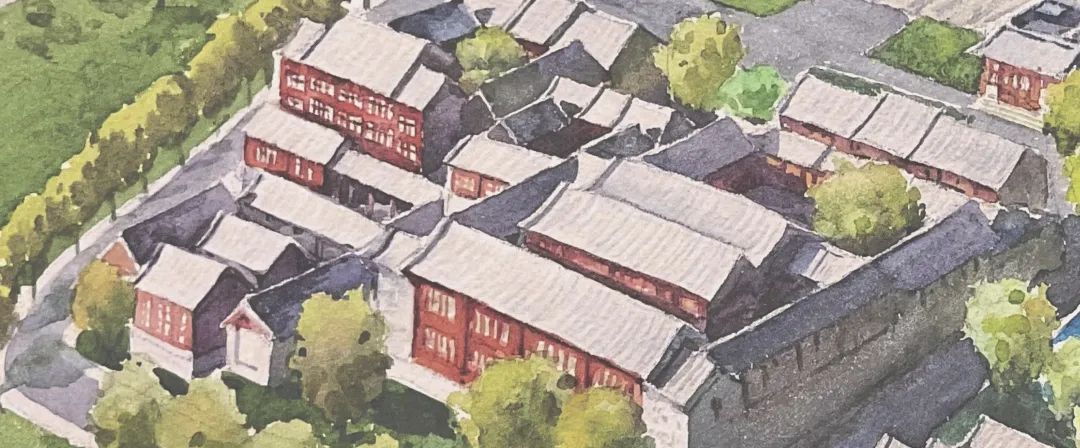
Introduction
Balancing industrial development with environmental protection is a critical challenge for achieving sustainable development, particularly in developing countries. While industrial growth drives economic progress and job creation, it can also lead to resource depletion and environmental degradation if not managed responsibly. Effective environmental policies and technical standards are essential in ensuring that industrial transformation supports long-term sustainability.
Technical standards play a crucial role in guiding industries toward high-efficiency, low-carbon development. By setting clear benchmarks for emissions, resource use, and technology adoption, they encourage businesses to invest in greener practices. International standards also help reduce trade barriers, enabling the global exchange of environmentally friendly technologies and products. Integrating these standards into global supply chains fosters international cooperation and accelerates progress toward sustainable development.
The Montreal Protocol provides a compelling example of how international environmental agreements can shape industrial transformation through standard-setting. As one of the most successful global environmental treaties, the Protocol has driven technological progress, industrial upgrading, and green innovation. China’s experience in implementing the Montreal Protocol illustrates how a country can transition from being a passive adopter of international standards to an active leader in global standard-setting, thereby contributing to the achievement of compliance objectives and providing valuable lessons for aligning industrial growth with environmental sustainability.
The Montreal Protocol and its Role in Standard Development
International multilateral environmental agreements, as important mechanisms and platforms for addressing global environmental issues, provide a baseline framework for global environmental governance. By continuously promoting the development and improvement of technical specifications and energy efficiency standards by international standard-setting organizations and their member countries, these agreements facilitate technological upgrades and full-chain green and low-carbon transitions in relevant industries. They also accelerate the exchange and cooperation of green technologies and products among their member countries, achieving simultaneous enhancement of industrial competitiveness and ecological benefits, and establishing a dynamic balance between development and environmental protection. The implementation of the “Montreal Protocol on Substances that Deplete the Ozone Layer” (hereinafter referred to as the “Montreal Protocol”) provides a case on this topic.
The Montreal Protocol was concluded in 1987. It initiated the global action to protect the ozone layer under the framework of the Vienna Convention for the Protection of the Ozone Layer. The Protocol sets rigid compliance targets to gradually phase out the production and consumption of ozone-depleting substances. Since its implementation 38 years ago, the Montreal Protocol has become a paragon of the international community’s cooperation in addressing environmental issues. The current United Nations Secretary-General António Guterres has described it as a “success story of multilateralism” and a “powerful symbol of hope.”
Its implementation involves multiple industrial sectors, including refrigeration, foam, fire-fighting, and chemicals, etc. So far, countries have successfully achieved phased compliance targets for the elimination or reduction of controlled substances by employing a variety of means, such as policy and regulatory frameworks, technological research and innovation, transition to alternative technologies, public awareness and training programs, and international cooperation. During the process of its implementation, all Parties to the Protocol are concerned with the effectiveness and sustainability of compliance. Developing countries, in particular, pay close attention to the feasibility and availability of alternative technologies, as well as issues related to the costs of alternatives, which build up the foundation for the achievement of compliance objectives. In light of this, the institutions under the Protocol and Parties, based on the needs of compliance, continue to strengthen dialogue and communication with relevant international standard-setting organizations such as ISO and IEC, as well as national standard-setting bodies of the Parties. They actively participate in the formulation and revision of relevant technical and product standards, commit to promoting alternative technologies and products, and provide technical assurance for the sustainability of compliance effectiveness. While achieving the dual environmental benefits of protecting the ozone layer and addressing climate change, the Montreal Protocol has also driven technological progress and green transformation and development within industries and enterprises.
China’s Efforts on Standard Development in Process of Implementing the Montreal Protocol
China acceded to the Montreal Protocol in 1991. Since then, as one of the major producers, users, and exporters of controlled substances under the Protocol, China has been committed to constructive participation in the implementation of the Protocol. Initially, China was also a developing country lacking technological and financial capabilities. In the course of its implementation, China learned by doing, and enhanced its own technological capabilities. It also shared its practice and experiences with other countries, and provided constructive solutions.
During the process of fulfilling its commitments under the Montreal Protocol, China has also recognized the key role of standard development in the application and promotion of alternative technologies and new products. In China’s compliance strategies both at the national level and sector level, the formulation and revision of standards have always been an important component. By establishing technical standards, it ensures that compliance actions and technological innovation achieves synergies. Since 2008, when China began the phase-out of hydrochlorofluorocarbons (HCFCs) in production and consumption in accordance with the requirements of the Montreal Protocol, key sectors are simultaneously advancing the updates of standards and the compliance process, using standards to guide industry transformation. For instance, the room air conditioner sector, industrial and commercial refrigeration and air conditioning sector, refrigeration servicing sector, and extruded polystyrene foam sector have, in conjunction with the process of phasing out controlled substances and applying alternative technologies, successively completed the formulation or revision of 24 standards. These standards cover various aspects, including technical specifications, product performance, safety in production and use, transportation requirements, operational procedures, vocational skills, and product energy efficiency ratings, etc.
The formulation and revision of these standards have contributed to the removal of technical barriers for the market penetration of alternative technologies, serving as a crucial technical support for China’s timely achievement of its compliance targets. At the same time, they have provided the industry with clear technical specifications, continuously empowering the industry’s green transformation and technological innovation. This also contributed a replicable “standards+” solution to the compliance efforts under the Montreal Protocol.
Chinese Industry Practice: Constructive Participation in Standard Development
Under the Montreal Protocol, China’s room air conditioner sector has persisted in advancing compliance practices through technological innovation and standard breakthroughs. This has not only helped it achieve the phased-out targets for controlled substances on schedule, but also led the global transition and development of green refrigerants.
China is the world’s largest producer, consumer, and exporter of room air conditioners. According to statistics from the industry association, its production volume exceeded 170 million units in 2023, accounting for over 80% of the global total. In the process of implementing the Montreal Protocol, around 2011, China’s room air conditioner sector was the first in the world to select propane (R-290) as an alternative technology route. R-290 is not only an ozone-friendly and climate-friendly technology but also has good energy efficiency performance. However, its flammability posed a new technical challenge for the sector. At that time, there was a lack of systematic and in-depth understanding of the characteristics of flammable refrigerants globally, and international standards adopted a relatively simple calculation method for the charge limit of flammable refrigerants based on past practices. The overly low charge limit prevented R-290 from fully leveraging its performance advantages, thereby affecting its application scope, cooling and heating effects, and energy efficiency. Meanwhile, China’s standards at that time were equivalent to the international standards of IEC (IEC60335-2-40), which also constrained the application of R-290 refrigerant.
Accordingly, starting in 2012, the Chinese government and industrial association began to work closely together to participate in the revision of IEC international standards. In 2013, Chinese experts joined the working group established by IEC’s Sub-Committee (SC61D) for the first time. Within the working group, Chinese representatives, based on scientific experimental data, continuously shared China’s research and testing results, gradually gaining recognition from the majority of the working group members. In the process, China and India collaborated and jointly advocated for the revision of the standard. In 2015, driven by experts from China and other countries, the IEC Technical Committee further established a dedicated working group to revise the standards for flammable refrigerants, including R-290. On May 25, 2022, IEC officially released the 7th edition of the standard “Safety of Household and Similar Electrical Appliances: Particular Requirements for Heat Pumps, Air Conditioners and Dehumidifiers” (IEC60335-2-40), which focuses on providing more scientific and rational requirements and regulations for increasing the charge limits of A2L, A2 and A3 flammable refrigerants in product applications. This revised standard is a significant milestone for the room air conditioner sector, which substantially facilitates the uptake of R-290 refrigerant.
From the participation of the standard revision in 2012 to the release of the new standard version in 2022, it took nearly a decade. During this period, Chinese experts participated in the revision working group meeting for the first time, continuously shared China’s experimental results, hosted working group meetings for many times, and saw their proposals recognized and transformed into the final standard content. This process has substantially promoted the application of R-290 as an alternative technology to replace HCFCs controlled by the Montreal Protocol, helping China’s room air conditioner sector achieve the phased-out targets for HCFCs on schedule. Meanwhile, by establishing an industry development model of “compliance driven – technological innovation – standard adaptation,” it has avoided the issue of passively following international standards that could restrict the technological innovation. It has also effectively resolved the barriers to industrializing green and low-carbon alternative technologies. This provides an inspiration for compliance practices in other developing countries.
The process of China’s air conditioner sector participating in the revision of IEC standards also witnessed the transition from being a follower to a leader in international standard development, demonstrating the enhanced voice of developing countries in technological innovation and development. By sharing research and testing results, China broke the long-standing lead of developed countries in international standard-setting. Through cooperation with other developing countries such as India, China has practiced the South-South cooperation in the revision of international standards. By leading the IEC/SC61D working group meetings, China has transformed the application specifications of R-290 into a globally accepted technical language, achieving rule-making output originating from developing countries. This model of “experimental data-driven – inter-country collaboration – standard system output” enhanced the technical bargaining power of developing countries in the formulation and revision of international standards.
Above experience in China’s room air conditioner sector has accelerated the global low-carbon transition of refrigerants and provided a “Chinese solution” for the development of global environmentally friendly refrigeration technologies. These practices demonstrate that China’s manufacturing sector remains committed to continuous technological innovation, places great emphasis on the improvement of standard-related technical policies, and leverages standards to drive industrial development. This practice of achieving synergy between environmental protection and industrial competitiveness through standard-setting provides reference for developing countries to address the challenge of “environmental compliance-economic growth”.
Conclusion
During the implementation of the Montreal Protocol, China’s experience in the development of technical standards has provided key insights for policy design, technological innovation, and industrial development, especially for developing countries striving to balance industrial growth with environmental sustainability.
As the world’s largest producer and consumer of industrial chemicals, China’s constructive participation in international standard-setting in line with technological advancements has driven the application of alternative technologies and successfully phased out ozone-depleting substances (ODS). This demonstrates that strong government policies, industry engagement, and international cooperation can drive large-scale environmental progress and guide the green transformation of industries without hindering economic development. Scientific and rational technical standards provide clear guidance and regulation for the scaling up and sustained application of new technologies. While effectively alleviating the challenges faced by developing countries in the feasibility of alternative technologies for compliance, these standards also support the consolidation of compliance outcomes.
Moreover, China’s shift from being a follower of global standards to a leader in international rule-making has set an example for other emerging economies to actively participate in global environmental governance. In the process of promoting international standard-setting, collective action by Chinese industries, prioritizing domestic technological practices, and subsequently supporting the revision of international standards has created a “domestic experimentation–international promotion” pathway. This approach offers a more cost-effective solution for developing countries to address their prominent environmental issues. Meanwhile, the practice of China and India collaborating and jointly advocating for the revision of IEC standard also sets an example for developing countries to collectively tackle global environmental problems. Beyond ozone layer protection, China’s experience is also highly instructive in addressing broader environmental challenges, such as climate change, air pollution, and industrial emissions, and in building a more sustainable global industrial system.
[1] United Nations Industrial Development Organization (UNIDO), Industrial Development Report 2024.
[2] António Guterres, Message on the International Day for the Preservation of the Ozone Layer, 2024.
[3] Dou Yanwei, Li Xiaoyan, Guo Xiaolin, Wang Lei, Chen Jianming, Analysis of the New IEC60335-2-40 Standard’s Regulations on the Charge Limits of Flammable Refrigerants, 2024, 44(02), Refrigeration Technology.

About Author
Author: Xiaolin Guo
Email: [email protected]
Ms. Guo Xiaolin is the Director of Division of Policy Research in Foreign Environmental Cooperation Center affiliated to the Ministry of Ecology and Environment of the People’s Republic of China. Her interest includes international environmental agreements, international and South-South cooperation in environmental protection and industrial green and low-carbon development. She is a PhD student at ISSCAD.
精选推送

感谢关注


如需转载,敬请联络
期待投稿,欢迎合作
关注南南合作与发展学院,关注中国与世界。